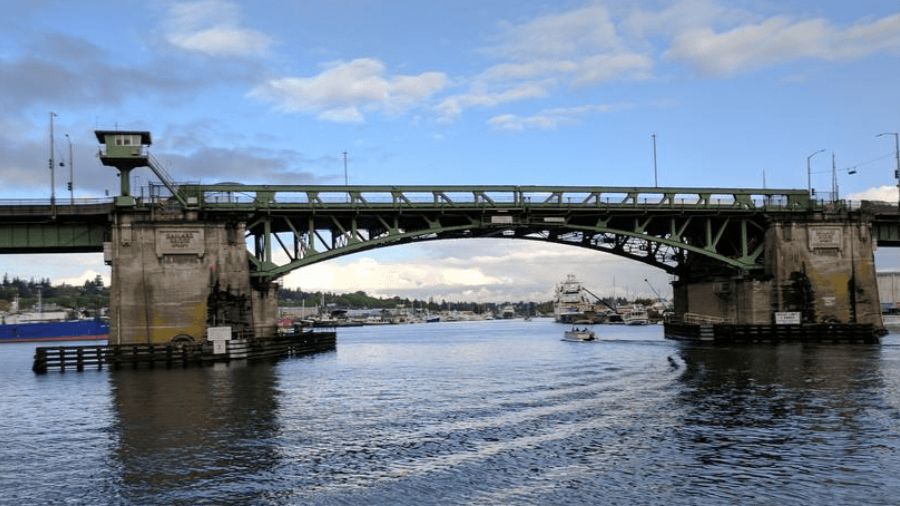Nighttime work ramps up on Portage Bay Viaduct Project
Feb 5, 2025, 1:36 PM | Updated: Feb 12, 2025, 4:30 pm

Outline of the SR 520 Portage Bay Bridge and Roanoke Lid Project. (Image courtesy of WSDOT)
(Image courtesy of WSDOT)
Over the past couple of months, commuters on State Route 520 (SR520) have noticed the progression of the steel trestle for the new adjacent to the current viaduct.
For residents in the area, it鈥檚 been a noisy progression at times. Most of the work is during daylight hours but the occasional nighttime work has required the to notify nearby residents of the noise impact ahead of time, with a (TNV) permit offering accommodations.
Beginning Wednesday, February 5, nighttime work will pick up and will fall under the (MPPCNV), allowing set noise limits without the need to offer accommodations to residents. The six-year permit will be closely monitored by on-site inspectors and will not include nighttime piledriving. Projects that will create elevated noise levels are excavations, concrete sawing, installing support beams, rebar and concrete work, paving, signing and striping.
Flying after May? You鈥檒l need more than a WA driver鈥檚 license
During the six-year permit, there will be times when certain projects will require the TNV permit and residents will get plenty of notice with the offer of accommodations if the noise level is uncomfortable for them.
The (WSDOT) has a 24-hour hotline number at 206-319-4520 for residents to call with questions or concerns during construction. Callers will be directed to leave a message including their name, address and as much detail as possible to help staff determine if adjustments can be made. Concerned residents can also email comments to sr520bridge@wsdot.wa.gov with the same detailed message.
What’s next for Portage Bay Viaduct?
Later this month, the next phase of the Portage Bay Viaduct will expand to the nearby Bill Dawson Trail and will include removing trees and vegetation. All tree removals have been reviewed and permitted by the . Certified arborists and a project environmental team also weighed in and approved the removal of these trees.
The fallen trees will be repurposed in a variety of ways: including mulching to help stop soil erosion, managing stormwater runoff and landscaping in the wetlands. The city of Seattle has guidelines for replacing trees in an effort to maintain the urban canopy by using a formula that ensures more trees are planted than are taken away.
More on MyNW: Should speed cameras add microphones to nab street racers?
Nate Connors is a traffic reporter for 成人X站 Newsradio. You can read more of Nate鈥檚 stories聽here. Follow Nate on聽聽and email him聽here.听聽to follow 成人X站 Newsradio Traffic鈥檚 profile on X.














